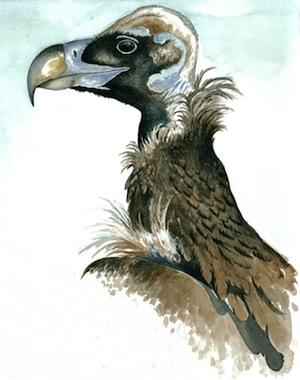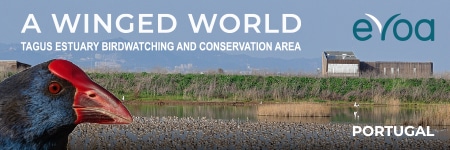Centro Region

Birding Central Portugal
Centro Region is a region in central Portugal, and its capital is Coimbra. Other important cities inside this region are Aveiro, Viseu, Leiria, Covilhã, Castelo Branco, Figueira da Foz, Guarda and Caldas da Rainha.Also includes historic cities such as:Tomar,Abrantes and Pinhel. It is one of seven Regions of Portugal (NUTS II subdivisions). This is one of the regions of Europe, considered by the European Union for statistical and geographical purposes. The region match roughly the boundaries of the older Beira, Portugal (the Beiras): Beira Alta, Baixa and Litoral region) plus the Oeste in former Estremadura and Médio Tejo, in former Ribatejo. Its population in 2005 totalled 2,376,609 inhabitants, and its area is 28,462 km² (density of 83 inhabitants per square kilometre).
The Centro is a region of diversified landscapes. The interior is mountainous with some plateaus, dominated by the Serra da Estrela mountain. The region is rich in pine and chestnut forests. The green, rugged landscape of this region is crisscrossed by rivers. Several river valleys at the foot of the mountains have a full bodied charm. The coastal plain has several beaches, like the ones of Mira, Figueira da Foz, Ílhavo, Aveiro, Nazaré, Peniche and São Martinho do Porto. Natural landmarks in this region are the Serra da Estrela mountain range (the highest in mainland Portugal (Portugal Continental)), with it’s Serra da Estrela Natural Park, and the Mondego river (Rio Mondego), the longest river located exclusively in Portuguese territory. Other important rivers and tributaries are the: Vouga, Côa, Dão, Tejo(partial) and Zêzere. Lagoons and Lakes: the Aveiro Lagoon (Ria de Aveiro), Pateira (lagoon) de Fermentelos, the Lagoa de Óbidos, Lagoa Comprida and Lagoa de Lorigã. Some coastal beaches: from Ovar on the N. to to Torres Vedras to the S.: Esmoriz, Cortegaça, Furadouro, Torreira, São Jacinto, Barra, Costa Nova, Vagueira, Praia de Mira, Tocha, Quiaios, Buarcos and Figueira, all north of the Mondego river. There are several beaches and pinewoods (pinhais, i.e. Pinhal de Leiria) a.k.a. Pinhal do Rei, south of the Mondego river. Some noted beaches south of Mongedo are: São Pedro de Muel, Vieira, Nazaré, São Martinho do Porto, Foz de Arelho and Praia de Santa Cruz. Also on the coast are the capes Cabo Mondego, in Figueira and Cabo Carvoeiro, in Peniche. Included in Centro region are the Berlengas islands, a small archipelago off the coast of Peniche and Almourol ,a tiny isle with Castle of Almourol(Castelo de Almourol) in the Tagus river(rio Tejo), in Barquinha.
-
NR Paul de Arzila
InformationSatellite ViewA small freshwater marsh with an extensive reedbed, located in central-west Portugal, very close to the town of Coimbra. The marsh is bordered by pine woodland, and is situated in a relatively densely populated region. An important part of a network of small wetlands in the Mondego valley, which includes two other IBAs: Paul do Taipal (009) and Paul de Madriz (011). -
NR Reserva Natural das Dunas de S.Jacinto
InformationSatellite ViewIt is a coastal area with a beach backed by both shifting and fixed sand dunes, maritime pine-woods and freshwater ponds, an area frequented by migratory waterfowl, some of which spend the winter here. This protected area consists of three different and characteristic zones, including a line of sand dunes, consolidated by spontaneous vegetation. The dunes are bordered by a forested area planted at the end of the 19th century, with the aim of preventing the sand from shifting, and consisting mainly of maritime pines and acacias. In the heart of the protected area, freshwater ponds have been dug to provide a shelter for the anatidae of the Ria de Aveiro and to help the herons to become established in the region. The largest of these ponds, known as the Pateira, is the perfect spot for various waterfowl to pay a temporary visit or spend the winter.
-
2008 [03 March] - Mark Easterbrook
ReportWith friends living near Cascais (35km west of Lisbon), the invitation to visit them and do some bird watching around the Lisbon area was irresistible. So leaving some hideous British weather behind we headed off from Luton airport on 7th Mar and retuned on the 16th having missed the biggest storm of the British winter – what a result! -
2009 [02 February] - Honeyguide
PDF Reporthese are some notes from a recce visit to Central Portugal by Rob Macklin and Chris Durdin. We were taken round by Domingos Leitão, who works for SPEA (the Portuguese BirdLife partner) and as an occasional guide for wildlife groups. -
2010 [04 April] - Rob Macklin
PDF ReportCrested larks and a red-rumped swallow were seen from the buses and Steve found a waxbill in a supermarket car park as we stopped to take on water. -
2014 [05 May] - Rob Macklin - Central Portugal
PDF Report...Our trip out on the river at Valada enabled us to get very close to a magnificent breeding heron and egret colony – probably as many as two thousand breeding pairs of various species including cattle egrets, spoonbills, black-crowned night herons and glossy ibises. On the Tejo, wading birds were the pick of the crop with hundreds of dunlin and grey plovers interspersed with bar-tailed godwits, whimbrels, greenshanks and ringed plovers among others...
-
Seabirding in Peniche
WebsiteSite about seabirds and seabirding in Western Portugal
-
Aves do Nosso Jardim
BLOG(Birds of our garden) - Neste blog iremos reportar os episódios da vida natural da nossa casa, uma pequena casa situada na zona Oeste de Portugal, com um jardim de 60m2… (Last updated 2013)
-
Paulo Alves - Wildlife Artist
GalleryPaulo Alves nasceu em Abrantes, Portugal, em 1989. O facto de ter nascido num meio rural permitiu-lhe contactar precocemente com a Natureza, revelando desde cedo uma aptidão para o desenho e pintura, tendo como motivo principal as aves… -
Photographer - C
GalleryEstou a desenvolver um trabalho, para a realiza

